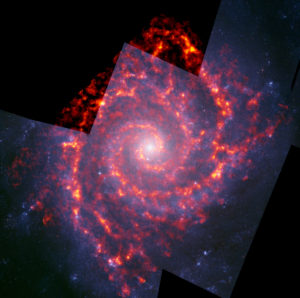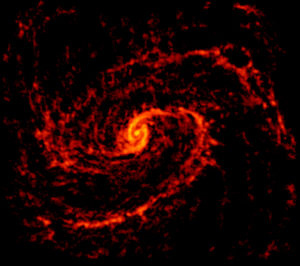Artist impression of Orion Source I, a young, massive star about 1,500 light-years away. New ALMA observations detected a ring of salt — sodium chloride, ordinary table salt — surrounding the star. This is the first detection of salts of any kind associated with a young star. The blue region (about 1/3 the way out from the center of the disk) represents the region where ALMA detected the millimeter-wavelength “glow” from the salts.


ALMA Image of Salt in Orion Source I
ALMA image of the salty disk surrounding the young, massive star Orion Source I (blue ring). It is shown in relation to the Orion Molecular Cloud 1, a region of explosive starbirth. The background near infrared image was taken with the Gemini Observatory.

ALMA and VLA Images of AT2018cow
ALMA and VLA images of the mysterious new type of cosmic blast, AT2018cow at left. Visible-light image of outburst in its host galaxy at right. Images not to same scale. Images of the blast itself do not indicate its size, but are the result of its brightness and the characteristics of the telescopes.

NGC 628, PHANGS-ALMA and HST Composite
Composite ALMA (orange) and Hubble (blue) image of NGC 628, also known as Messier 74, a spiral galaxy in the constellation Pisces, located approximately 32 million light-years from Earth. It is imaged as part of the PHANGS-ALMA survey to study the properties of star-forming clouds in disk galaxies.

PHANGS-ALMA Survey Sample Galaxies
Six ALMA-imaged galaxies out of a collection of the 74. The images were taken as part of the PHANGS-ALMA survey to study the properties of star-forming clouds in disk galaxies.

PHANGS-ALMA Radio Image of NGC 4321
ALMA image of galaxy NGC 4321, also known as Messier 100, an intermediate spiral galaxy located about 55 million light-years from Earth in the constellation Coma Berenices. It is imaged as part of the PHANGS-ALMA survey to study the properties of star-forming clouds in disk galaxies.





